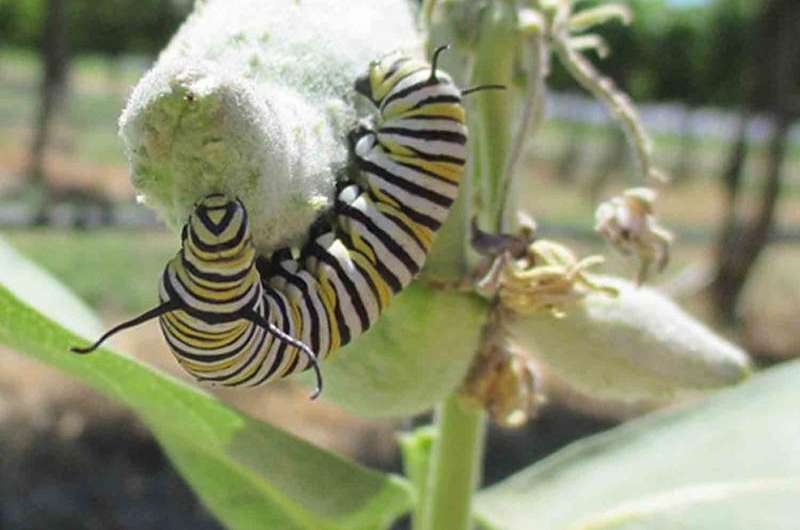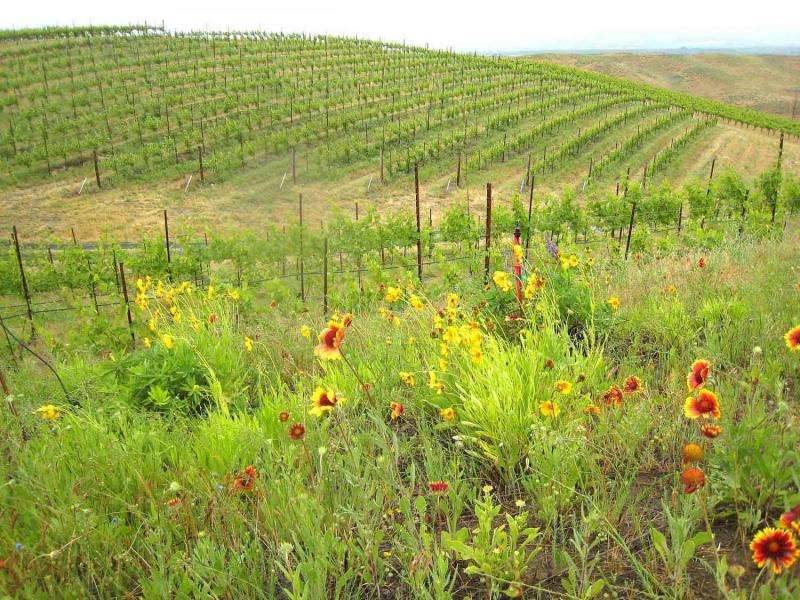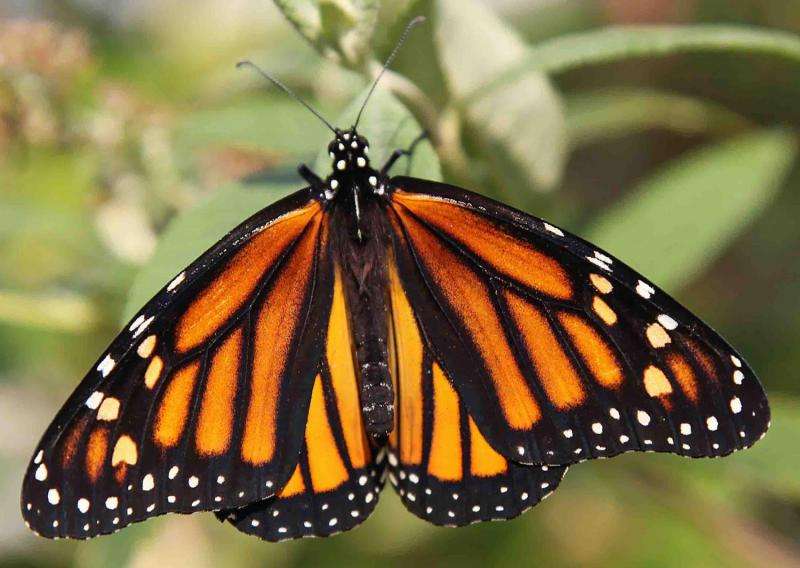Vineyard habitats help butterflies return

Washington wine grape vineyards experimenting with sustainable pest management systems are seeing an unexpected benefit: an increase in butterflies.
Over the years, loss in natural habitat has seen the decline in numbers of around 50 species of butterflies in eastern Washington. But in a recent Washington State University study published in the June issue of the Journal of Insect Conservation, researchers found that vineyards that create nearby natural habitats have three times the number of butterfly species and four times more butterflies than conventional vineyards.
WSU researchers recorded 29 separate species in "habitat-enhanced" vineyards, compared to nine species in conventional vineyards. In terms of raw numbers, they counted on average 20 butterflies in habitat-enhanced vineyards compared to five in conventional areas.
A fluttery side effect
David James, an associate professor in WSU's Department of Entomology, wrote the paper with colleagues. He said butterfly increase was not the goal of the return of natural habitats. Instead, growers want to reduce pesticide usage.
To help control pests, they plant native sage-steppe shrubbery in and around their vineyards. These native plants, such as desert buckwheat shrubs, attract "good" insects like parasitic wasps, James said.

Wasps feed on mealybugs and other "bad" insects that can be harmful to the vineyards. But as a side benefit, these vineyards are seeing the return of other inhabitants that had declined when natural habitat was removed.
"Conservation of butterflies is becoming an issue because all species are declining," James said. "The habitat has been taken away by agriculture. This is a way of giving back. We're showing that an agricultural industry can live alongside the natural ecology and help preserve and conserve it."
This method of conservation may be exclusive to Washington, since vineyards in this state already face fewer pests and use fewer chemicals than vineyards in states like California.
"We're fortunate here to have the perfect place to be able to have this sustainable option," James said.
Why butterflies?
The increase in butterfly numbers isn't directly beneficial to vineyards. Butterflies don't eat any pests or have any direct economic benefit. But they naturally live on the returned native plants, both as caterpillars and as adult butterflies. They also have immense aesthetic appeal to people, are important pollinators and are an important part of healthy ecosystems.

James said the viticulture industry is unusual in agriculture because many vineyards and wineries invite people onto the property to enjoy the product.
"To have butterflies flying around could be part of a tourism drive and an attraction for visitors," he said. "In these days of organic production and not wanting pesticides on food, butterflies can be a symbol of that. To show butterflies flying around vineyards has great aesthetic and commercial appeal."
Career coming full circle
James has been working on pest management in grapes and other crops for several decades. But his interest in entomology started with butterflies. He's written a few books on butterflies, including "Life Histories of Cascadia Butterflies" about species that live in Washington. But he's rarely been able to study them professionally because they don't have a large economic impact.
"It's very rare to get a job that involves butterflies. They weren't even under threat when I started my career," said James, who wrote his Ph.D. dissertation 30 years ago on about the monarch butterfly. "But to now combine practical pest management work with butterflies is remarkable. And I think it will only grow as we continue to see the benefits of natural pest management around the world. Nature conservation and agriculture will be intimately linked in the future. The Washington wine grape industry is a pioneer of this movement."
Provided by Washington State University
















